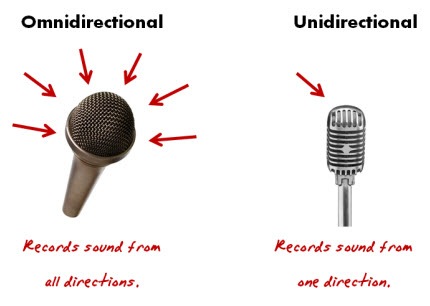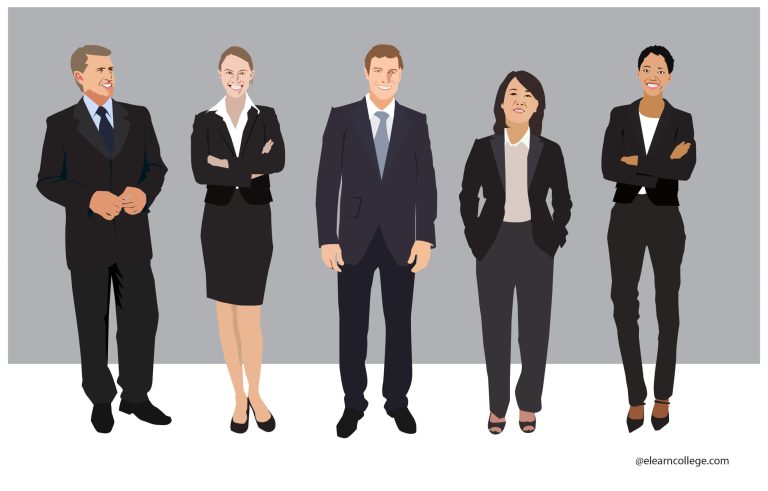What is Shyness Body Language
Step right up, folks, and get ready to decode the mysterious language of shyness! 🎪 In this fascinating exploration, we’ll unlock the secrets of “shyness body language” and reveal how our bodies can speak volumes when we’re feeling a little timid or unsure. So, get ready to uncover the hidden signals that our bodies send out when shyness takes the stage!
Picture this: you walk into a room full of strangers, and your heart starts to race. Your palms get clammy, and your eyes dart around, desperately seeking an escape route. Sound familiar? Well, my friend, you’ve just stepped into the world of shyness body language, where even the tiniest gestures can speak volumes about our internal emotions.🌟
Now, don’t worry, I’ve got your back. Throughout this captivating journey, we’ll delve into the fascinating world of shy body language, uncovering the subtle cues that can reveal someone’s shyness. From crossed arms to fidgety fingers and averted gazes, we’ll decode the language of shyness, empowering you to understand yourself and others on a whole new level. So, buckle up, because this rollercoaster of nonverbal communication is about to take you on a wild ride! 🎢
Are you struggling with shyness? Discover how to overcome it by mastering your body language. Non-verbal cues are essential in conveying confidence. Here are a few tips to help you:
1. Stand tall with good posture.
2. Make eye contact and smile.
3. Use open body language.
4. Practice gestures that exude confidence.
5. Slow down your movements and speak clearly.
Remember, your body language speaks volumes. Use these techniques to project confidence and overcome shyness!

Unveiling the Language of Shyness: Understanding Shyness through Body Language
Shyness is a common trait that many individuals experience in social situations. In order to gain a deeper understanding of shyness, it is essential to explore the subtleties of body language. Body language plays a significant role in communication, and for individuals who are shy, it can often reveal their innermost feelings and emotions. By deciphering the nonverbal cues of shyness, we can gain insight into the thoughts and struggles of those who experience it. In this article, we will delve into the intricacies of shyness body language and how it can shape our understanding of this personality trait.
Body Language Cues of Shyness
When it comes to shyness, the body speaks louder than words. By paying attention to certain cues, we can identify when an individual is feeling shy or uncomfortable in a social setting. Here, we will explore some of the key body language cues that are often exhibited by shy individuals:
1. Averted Eye Contact
Shy individuals tend to have difficulty maintaining eye contact. Their gaze often shifts away from others, indicating their discomfort and anxiety in social situations. Averted eye contact can also signify a lack of confidence or a fear of judgment.
Individuals who are shy may also exhibit other eye-related behaviors such as excessive blinking, which can further underscore their anxiety and nervousness.
2. Subdued Posture
Shyness often manifests in the form of a subdued and closed-off posture. Shy individuals may hunch their shoulders, cross their arms, or position their bodies in a way that shields them from others. These defensive postures serve as a protective mechanism and reflect their desire to retreat and withdraw from social interactions.
It is important to note that while a subdued posture is common among shy individuals, it does not necessarily indicate a lack of confidence or low self-esteem. Shyness is a complex personality trait that can coexist with confidence and high self-worth.
3. Nervous Gestures
In an attempt to cope with their shyness, individuals may display a variety of nervous gestures. These can include fidgeting, playing with one’s hair or clothing, tapping fingers, or even biting nails. These gestures serve as outlets for their nervous energy and are often subconscious ways of self-soothing.
By observing these nervous gestures, we can gain insight into the internal turmoil experienced by shy individuals and their efforts to navigate social situations.
The Impact of Shyness Body Language on Interactions
Shyness body language significantly influences how others perceive and interact with shy individuals. Unfortunately, misunderstandings and misinterpretations commonly occur, which can reinforce feelings of anxiety and social isolation. Understanding the impact of shyness body language can help foster empathy and create a more inclusive environment. Here are some key points to consider:
1. Perception of Aloofness
Shy individuals may be perceived as aloof or disinterested due to their averted eye contact and closed-off body language. Others may misinterpret their shyness as coldness or arrogance, leading to strained interactions and missed social connections. By being aware of these perceptions, we can approach shy individuals with understanding and compassion.
2. Difficulty Initiating Conversations
Shyness body language can make it challenging for shy individuals to initiate conversations or engage in small talk. Their subdued posture and nervous gestures can make them appear unapproachable, creating a barrier to meaningful social interactions. By making an effort to create a welcoming and inclusive environment, we can help shy individuals feel more comfortable and encouraged to participate in conversations.
3. Amplifying Self-Consciousness
When shy individuals sense judgment or criticism from others, their shyness body language may become more pronounced. This self-consciousness can further perpetuate their feelings of shyness, creating a cycle that is difficult to break. By practicing empathy and creating a non-judgmental atmosphere, we can help shy individuals feel more at ease and accepted.
Overcoming Shyness: Tips for Growth and Development
Despite its challenges, shyness is a trait that can be managed and overcome with time and effort. By adopting certain strategies, individuals can gradually grow and develop their social skills. Here are some tips for overcoming shyness:
1. Gradual Exposure
Gradual exposure to social situations can help desensitize shy individuals and build their confidence. Starting small and gradually increasing the level of exposure can allow individuals to become more comfortable and confident in social settings.
2. Mindfulness Techniques
Practicing mindfulness can help individuals become more aware of their thoughts and feelings in social situations. By observing their shyness body language and thought patterns, individuals can begin to challenge negative self-perceptions and replace them with positive affirmations.
3. Seek Support and Therapy
Professional support and therapy can provide shy individuals with the guidance and tools necessary to overcome their shyness. Therapists can help individuals identify the roots of their shyness and develop effective strategies for managing and navigating social interactions.
Remember, overcoming shyness is a personal journey that requires patience, self-compassion, and consistent effort. By understanding the language of shyness through body language and adopting strategies for growth, individuals can gradually break free from the shackles of shyness and embrace a more confident and fulfilling social life.
Key Takeaways: Shyness Body Language
- Look down or avert your gaze when feeling shy.
- Avoid eye contact to protect yourself from feeling exposed.
- Slouched posture indicates shyness and a need to hide.
- Fidgeting with hands or touching your face are common signs of shyness.
- Speaking softly or avoiding speaking altogether can signal shyness.
Frequently Asked Questions
When it comes to understanding shyness and body language, many people have questions. Here are some of the most common ones:
1. How can shyness be detected through body language?
Shyness can often be detected through specific body language cues. Some signs include avoiding eye contact, crossing arms or legs, fidgeting, and standing with a slouched or closed-off posture. These behaviors indicate a person’s discomfort or uneasiness in social situations. However, it’s important to remember that not everyone displays the same body language, and individual differences should be taken into account.
Additionally, it’s crucial to consider other factors such as cultural backgrounds and context, which can influence body language interpretation. Overall, paying attention to clusters of non-verbal cues can provide insights into someone’s shyness, but it should always be done with sensitivity and open-mindedness.
2. Can body language impact shyness?
Yes, body language can have an impact on shyness. By making subtle changes to your body language, you can boost your confidence and reduce feelings of shyness. For instance, practicing open and expansive postures, maintaining eye contact, and smiling can help convey a sense of confidence and approachability. These small changes in body language have been shown to positively impact how others perceive and interact with you, thus reducing shyness.
Furthermore, being mindful of your body language can help you become more aware of your own feelings and emotions. By intentionally using confident body language, you can reinforce positive self-perception and gradually overcome shyness. Remember, it may take time and practice, but adjusting your body language can be a powerful tool in managing shyness.
3. Are there universal body language signals for shyness?
While there are some common body language signals that may indicate shyness, it’s important to note that body language interpretation can vary across cultures and individuals. Some universal signals of shyness include avoiding eye contact, blushing, and displaying closed-off or defensive postures. These cues often reflect an individual’s discomfort or anxiety in social situations.
However, it’s crucial to consider cultural differences in interpreting body language. For example, in some cultures, avoiding eye contact is a sign of respect rather than shyness. Therefore, it’s essential to be culturally sensitive and aware of the context in which the body language is displayed when interpreting shyness signals universally.
4. Can body language training help overcome shyness?
Yes, body language training can be a valuable tool in helping individuals overcome shyness. A key aspect of body language training is providing individuals with awareness and strategies to modify their non-verbal behaviors. By learning to adjust their posture, facial expressions, and gestures, individuals can project confidence and reduce shyness.
In addition to modifying body language, body language training can also encompass other important skills such as active listening, assertiveness, and communication techniques. These skills, when combined with effective body language, can empower individuals to interact more comfortably in various social situations and gradually overcome shyness.
5. Is shyness always a negative trait in body language?
No, shyness is not always a negative trait in body language. While shyness may be perceived as a hindrance in some situations, it can also be seen as an endearing and relatable quality by others. Shy individuals often exhibit empathy, thoughtfulness, and careful observation in social interactions.
Moreover, shyness is not a fixed trait; it exists on a spectrum. People with varying degrees of shyness can possess valuable qualities. It is important to recognize and appreciate the diversity of personalities and understand that shyness does not define a person’s worth or potential. Instead of labeling shyness as wholly negative, it is essential to foster an inclusive and accepting environment that celebrates individual differences.

10 Body Language Signs A Shy Woman Wants You To Approach Her
Summary
Shyness can be expressed through body language, which includes various nonverbal cues. These cues can include avoiding eye contact, slouching, and fidgeting. Shy individuals may also use closed and protective postures, such as crossing their arms or hunching their shoulders. It is important to understand that shyness is a natural personality trait that many people have, and it is okay to feel shy in certain situations. Being aware of our own body language and recognizing it in others can help us understand and empathize with those who are shy. It is important to create a positive and inclusive environment that allows shy individuals to feel comfortable and accepted.

